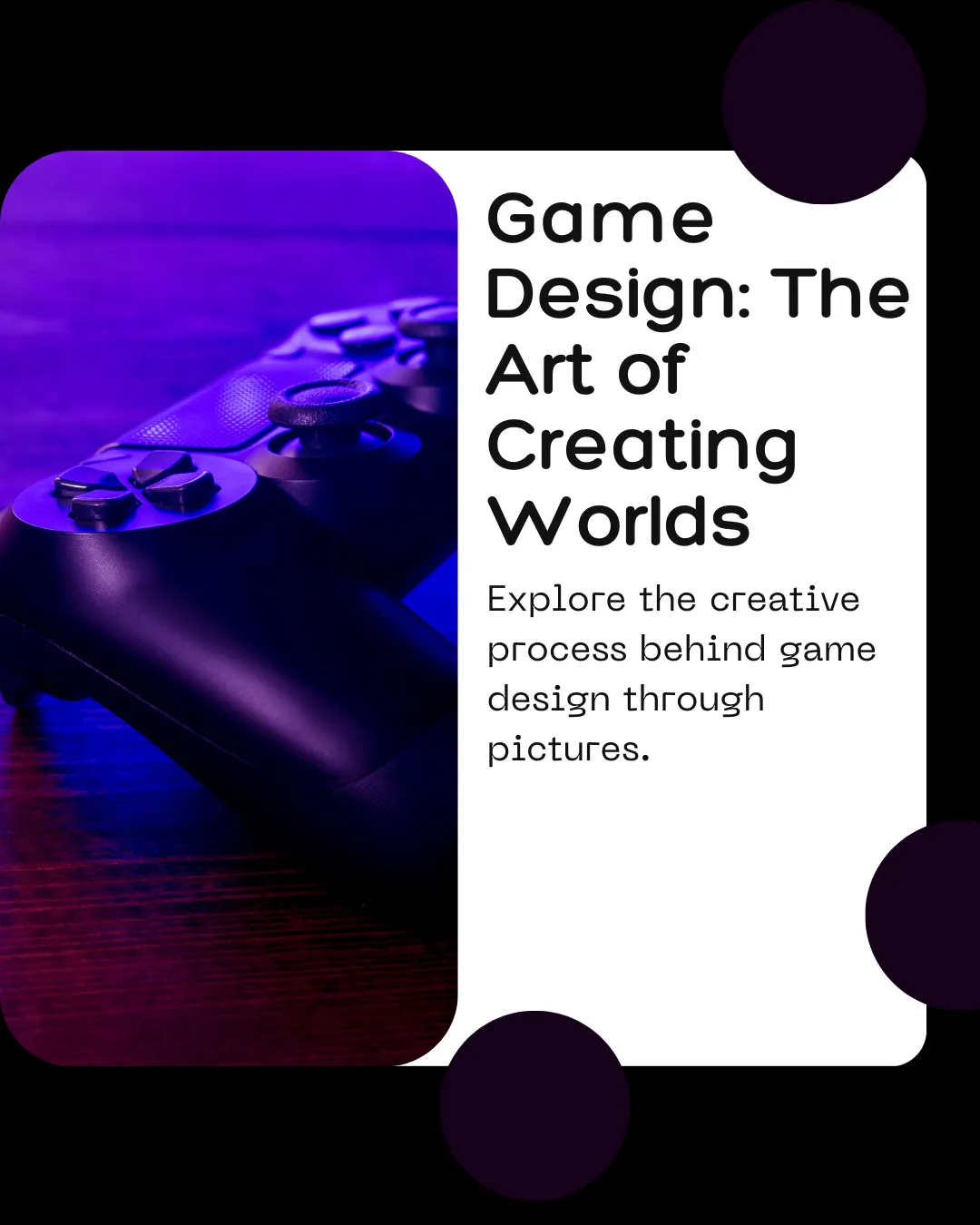1 min read Game Design: The Art of Creating Worlds

Welcome to the immersive realm of game design, where creativity knows no bounds and virtual worlds come to life. The art of crafting interactive experiences has evolved into a captivating journey that transports players to fantastical landscapes, challenges their skills, and tells stories that resonate across the digital expanse. In this exploration, we delve into the intricate process of game design, celebrating the artistry and innovation that goes into creating worlds that captivate the imagination.
1. Conceptualization: From Vision to Virtual Reality
Game design begins with a vision—an idea that sparks the creation of a new world. Designers conceptualize themes, settings, and narratives that will shape the gaming experience. Whether it's a sprawling fantasy kingdom, a post-apocalyptic wasteland, or an alien planet, the initial concept sets the stage for the journey ahead.
2. Storytelling: The Narrative Backbone
At the heart of every captivating game world lies a compelling story. Game designers are storytellers, weaving narratives that immerse players in a rich tapestry of characters, conflicts, and quests. The narrative becomes the backbone that guides players through the virtual landscape, adding depth and purpose to their interactions.
Design Principles: Building Blocks of Virtual Realities
1. Environmental Design: Crafting Aesthetically Pleasing Landscapes
The visual appeal of a game world is a testament to the skill of its designers. Environmental design involves creating landscapes, architecture, and atmospheres that resonate with the game's theme. From lush forests to futuristic cityscapes, the visual elements play a crucial role in establishing the tone and ambiance of the virtual world.
2. Level Design: Puzzles, Challenges, and Exploration
Level design is the art of creating spaces that engage players. It involves placing obstacles, challenges, and rewards strategically to ensure a balanced and enjoyable experience. Well-designed levels encourage exploration, stimulate problem-solving, and keep players invested in the unfolding narrative.
3. User Interface (UI) Design: Seamlessly Integrating Interaction
A seamless user interface is vital for player immersion. UI design involves creating intuitive menus, maps, and on-screen elements that facilitate easy interaction. The goal is to provide information without disrupting the flow of gameplay, allowing players to navigate the virtual world effortlessly.
Technological Marvels: The Fusion of Art and Technology
Game design is a fusion of artistic expression and technological innovation. Advanced graphics, realistic physics engines, and dynamic AI systems contribute to the technological marvels that bring virtual worlds to life. The synergy of art and technology enables designers to push the boundaries of what is visually and experientially possible.
Iterative Refinement: From Playtesting to Perfection
The journey of creating game worlds is iterative. Playtesting and user feedback play a pivotal role in refining the design. Designers analyze player interactions, address bugs, and make adjustments to enhance the overall gaming experience. This cyclical process ensures that the virtual world evolves into a polished and engaging masterpiece.
The Impact of Game Design on Culture and Entertainment
Game design has transcended traditional entertainment to become a cultural phenomenon. The influence of well-designed games extends beyond the gaming community, impacting storytelling, art, and even education. Games are now recognized as a powerful medium for artistic expression and a means of connecting people across the globe.
Conclusion: The Ever-Expanding Horizons of Creativity
In the ever-expanding universe of game design, creating worlds is an art form that unites visionaries, storytellers, and technologists. Each pixel, line of code, and narrative choice contributes to the magic of crafting virtual realities that captivate, inspire, and leave an indelible mark on players. So, whether you're a seasoned game designer or an aspiring creator, remember that within the canvas of creativity, the possibilities are limitless, and the next extraordinary world is just a design away.





































































